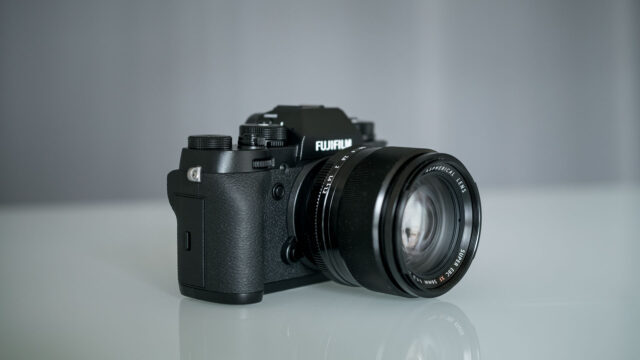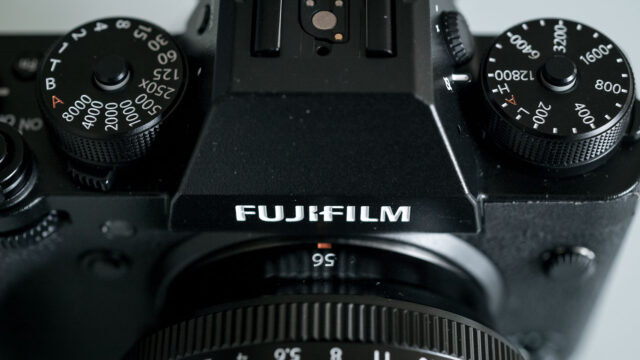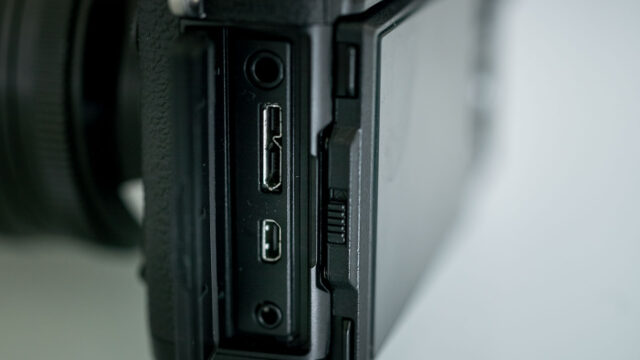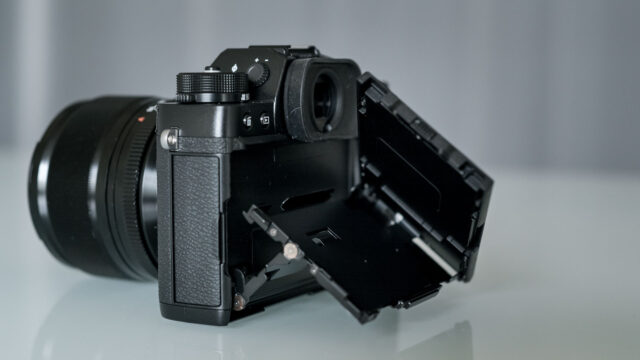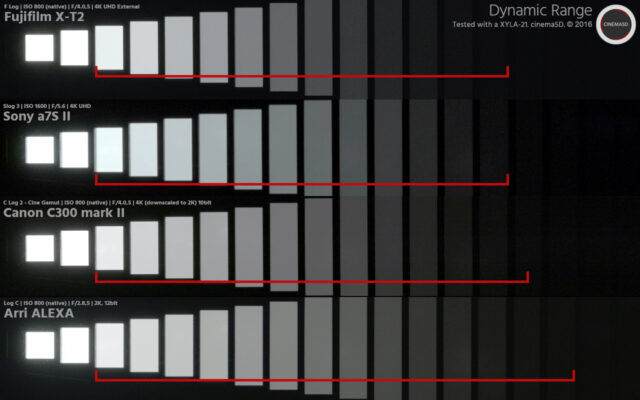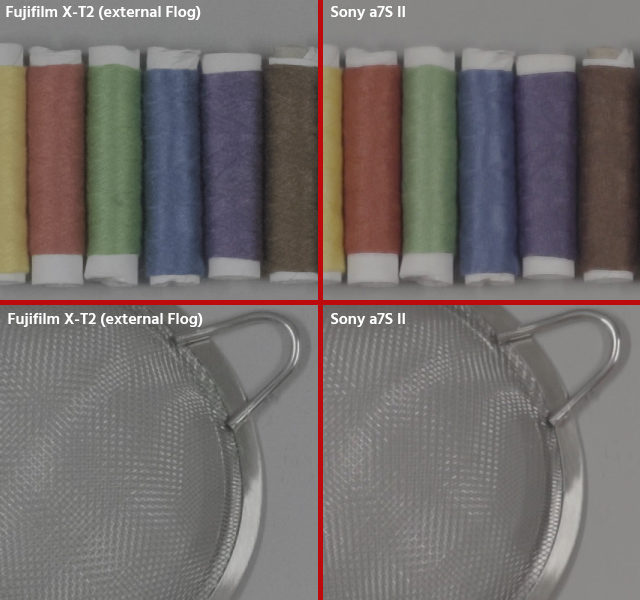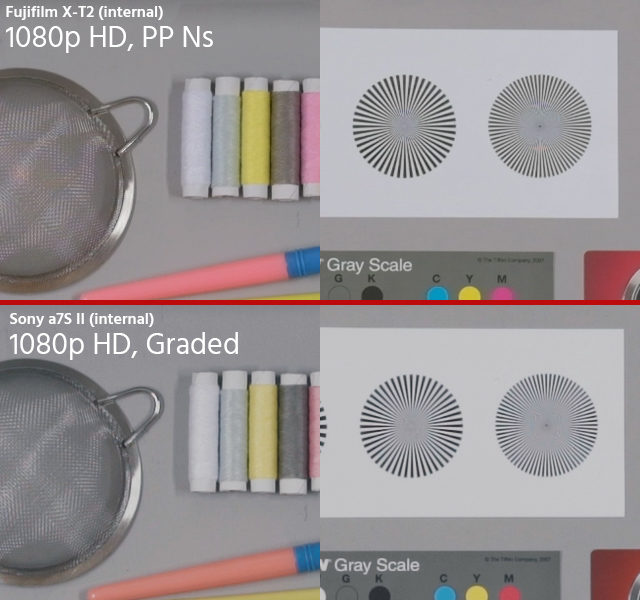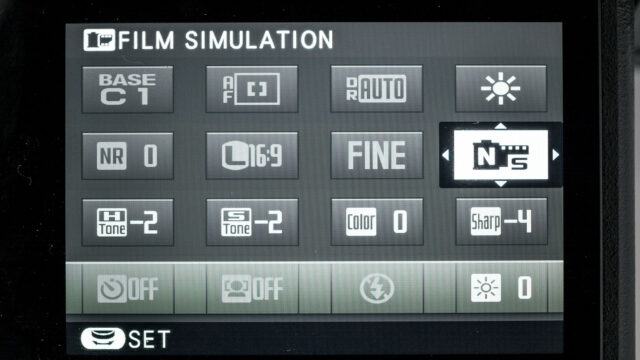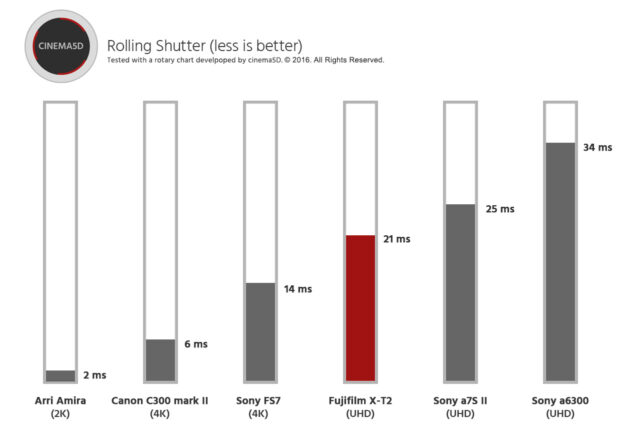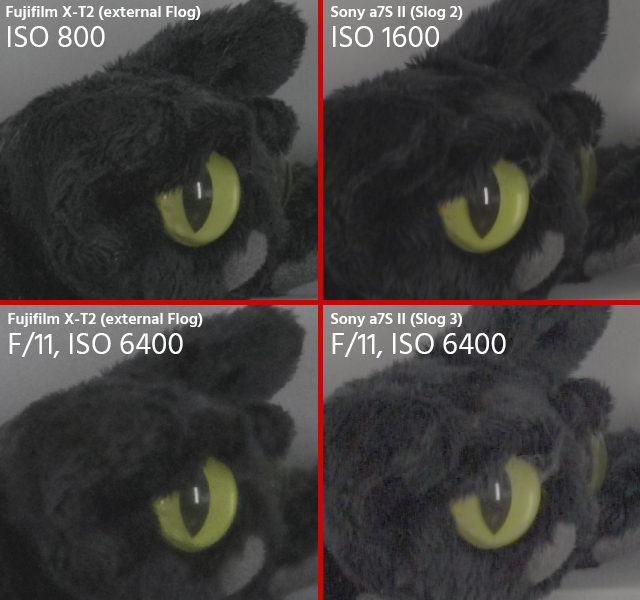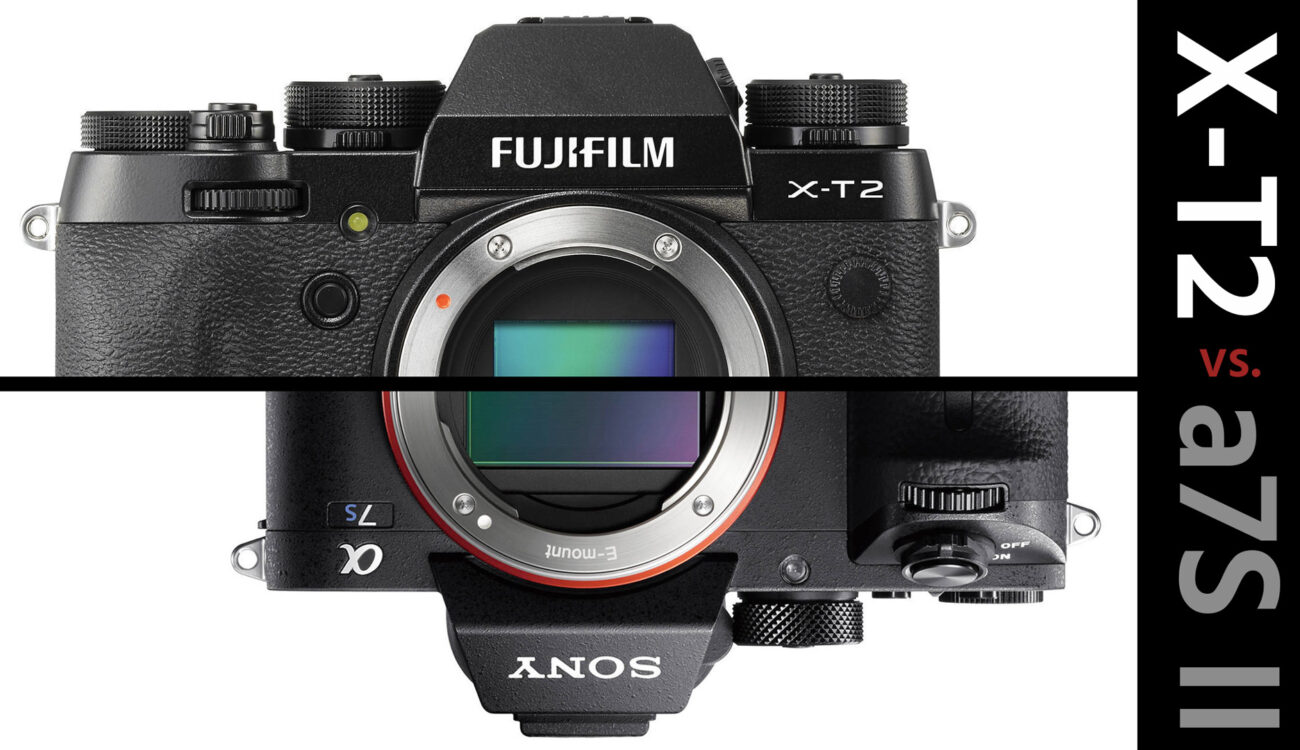
The Fujifilm X-T2 mirrorless camera is quickly becoming a candidate as the new gold standard in affordable 4K video. But will it be replacing the famous Sony a7S II as the best mirrorless video camera for cinematic shooting?
Fujifilm X-T2 – Best Mirrorless Video Quality?
Video shooters live in good times. Every few months, a new video shooting mirrorless camera rocks the market and gives us better cinema-like quality and features. Last year, the Sony a7S II quickly became the best mirrorless video camera you could get, with a nice 4K image, numerous useful video features and impressive lowlight performance.
Just two weeks ago, the Panasonic GH5 was announced and raised the bar once more with its specs, offering internal 4:2:2 10bit in 4K, though this camera will only see the light of day in 2017. For now, the Fujifilm X-T2 has landed on our desk and stands a serious contender against the Sony a7s II as the new gold standard. Let’s take a look.
We recently tested the Fujifilm X-T2 in a documentary style situation (check out our review). Few people expected that this camera would be quite so interesting for both photographers as well as video shooters. This is only Fujifilm’s first attempt at implementing 4K video into one of their mirrorless cameras, yet they got a lot of things right, and even since our review some new features have been implemented via a firmware update: Now you can get extended dynamic range (H-2, S-2) when recording internally.
Comparison: Fujifilm X-T2 vs. Sony a7S II
Both the Fujfilm X-T2 as well as the Sony a7S II are designed as mirror-less cameras in a photo body. The Fujifilm X-T2 has the Fuji X-Mount and houses an APS-C sized sensor. The Sony a7S II has the Sony E-mount and houses a full-frame sensor. There are fans for both sensor sizes, but in terms of the lens-mount, there are only a few adapters for Fuji right now, while there are many options for Sony E. This could change in the future, if user interest for Fuji X-Mount adapters rises.
In our cinema5D Test Lab we have tested and compared many cameras. In this review we will take a closer look at how the Fujifilm X-T2 sensor performs in comparison to the one in the Sony a7S II.
Fujifilm X-T2:
- Max Resolution: 4K UHD
- Max Framerate 4K: 29.97fps
- Max Framerate HD: 59.94
- Log Gamma: F Log
- Sensor: Aps-C
- Mount: Fuji X
- Codec Bitrate 4K: 105mbit
- Price: About $1600
Sony a7S II:
- Max Resolution: 4K UHD
- Max Framerate 4K: 29.97fps
- Max Framerate HD: 120fps
- Log Gamma: Slog2 & Slog3
- Sensor: Full-Frame
- Mount: Sony E
- Codec Bitrate: 95mbit
- Price: About $3000
Use the Fujifilm X-T2 with “F Log”
The Fujifilm X-T2 has some unique properties, most notably “F Log”, Fujifilm’s very own log gamma setting that creates the most neutral and natural image with the highest dynamic range. Unlike the Sony a7S II which records Slog 2 (or Slog 3) internally, Fujifilm has restricted F Log to external recorders.
Why did Fujifilm decide to do that? We actually talked to Jun Watanabe from Fujifilm about this recently, and it seems that they are open to implementing internal F Log should user interest be there (see the whole interview here).
Considering that the Fujifilm X-T2 comes at half the price of the Sony a7S II, and how beautiful the X-T2 image is (more on that later), it’s still quite a valid option to connect a $1300 external recorder (eg: Atomos Ninja Flame) to it, in order to get that nice 4:2:2 8bit F Log image in 4K.
Back at the editing desk you will notice that the XT-2 has the same problems when it comes to external recording as the Sony a7S II in Slog2 gamma. In practice, this means you will lose 1 stop of dynamic range unless you find a way to turn those video levels into their proper values. This can be done with our Slog FIX LUT either during recording or in post with no quality loss (Get it here).
If you use this camera for internal recording only, the X-T2 also offers some very nice film simulations (picture profiles) and still has very good image quality. But if you are dependent on a Log gamma for your post workflow, you will need an external recorder. We hope Fujfilm will include internal F Log in a future firmware update.
Dynamic Range
A good dynamic range rating allows us to capture a larger range of shadows and highlights in high-contrast scenes. An important property when it comes to evaluating the best mirrorless video camera. We’re testing with a DSC labs XYLA-21 transmissive test chart. For this review we used the Fujifilm 56mm F/1.2 lens instead of the Zeiss 50mm Cp2 macro (more on how we test HERE).
Our software measured about 12 stops of usable dynamic range on the Fujifilm X-T2. This is very similar to the rating of the Sony a7S II and Canon C300 mark II. Here’s a screenshot of the dynamic range of a few popular cameras compared.
12 stops is very a good rating for a cinema camera. Many videographers today praise the Canon C300 mark II for its dynamic range qualities and when we take a closer look, the Fujifilm X-T2 isn’t far behind. High end cinematic productions still use the Arri ALEXA, as it outperforms all other cameras we have tested with its 14 stops of usable range.
Image Quality
This is where the Fujifilm X-T2 blows away most other cameras we have tested. The image of the X-T2 is very homogenous, clean and has a high resolution that dissolves lots of detail with a nice filmic grain.
In the shot below you can see that the Fujfilm XT-2 offers slightly more detail than the Sony a7S II and seems to have better aliasing properties than both the Canon C300 mark II and Panasonic Varicam 35:
In the star graphic above, the a7S II and X-T2 look very similar. However, when you compare the image detail of other shots of the X-T2 vs a7S II (see below), you quickly see that the Fujifilm X-T2 always produces cleaner and more accurate shots:
In practice, of course most users will downscale their images to HD, and for this purpose all mentioned cameras perform admirably. Still, the kind of quality you get out of the Fujfilm X-T2 is impressive and leaves even our beloved Sony a7SII behind. This is also true for internal recordings and certainly makes the XT-2 one of the best mirrorless video camera when it comes to image quality in 4K. The only comparable camera in this field is the wonderful Sony a6300 (see our test here). the a6300 however has strong weaknesses in other areas.
Despite the lack of internal F Log, as mentioned earlier, the Fujifilm X-T2 comes with a variety of film simulating picture profiles in-camera. This is a very nice feature that we haven’t seen on any other camera yet. Others do offer “video picture profiles”, but none of them simulate filmic colors and contrast. Here are two different film simulations, recorded internally (105mbit H.264):
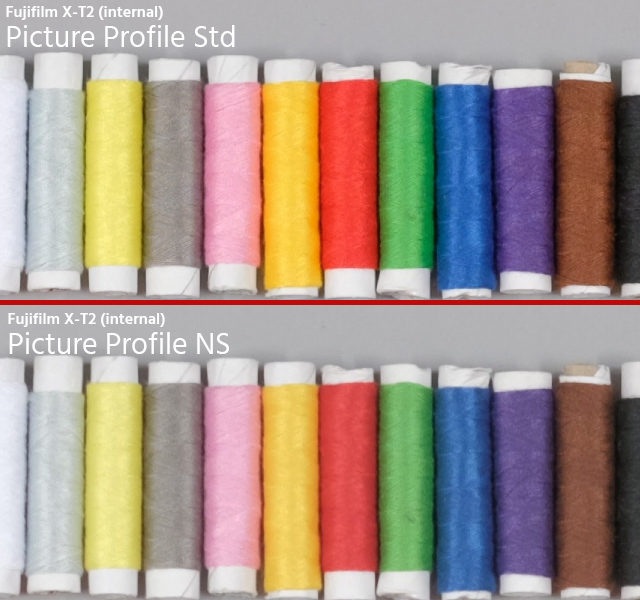
Fujifilm X-T2 colors. 100% crops from 4K images
As you can see image quality is just as impressive for internal recordings as it is when recording external 4K with an Atomos Ninja Assasin, like we did, or any other external 4K recorder.
And HD Quality?
Image quality in HD is not as impressive as in 4K mode. It is comparable to the Sony a7S II, but unfortunately there is also a lot of aliasing which creates lots of moire artefacts in contrasty image areas. The Sony a7S II performs better there and also offers 120fps, while the X-T2 only reaches 60fps. Below is a shot of the star chart and sieve comparing HD on both cameras:
Best Settings for Video on the Fujifilm X-T2
Sharpness
Sharpness should always be set to -4. Otherwise artificial sharpening is added in-camera and gives you a video-ish look. If needed, you can also add sharpness in post.
H-Tone and S-Tone
These two settings add a smooth highlight and shadow rolloff and increase the dynamic range of your image when set to -2 and -2. This was recently enabled via a new firmware update.
Film Simulation
There are several film simulation settings available for in-camera looks. Try them. We liked their “Ns” setting best.
All other settings (besides “white balance” which you set as needed) should be left untouched for best results. You should always shoot in 4K and downsample as needed later on, to get the best results.
Rolling Shutter
The Sony a7S II suffered from severe rolling shutter effect, a phenomenon also referred to as “jello”. Unfortunately, the rolling shutter that we see on most CMOS sensor video cameras is also present on the Fujifilm X-T2, but in comparison it is less pronounced than on the a7S II.
Lowlight
The Sony a7S II is an absolute miracle when it comes to lowlight performance. In comparison, the Fujifilm can’t reach the same high ISO’s but holds up well until ISO 3200, which is not bad in comparison to other mirrorless video cameras. Unfortunately, beyond that the X-T2 should be used with caution, because there is heavy and visible noise reduction going on that does not even look nice when downsampled to HD. We wish it could be disabled.
The following shot compares the Fujifilm X-T2 in F Log (ISO 800) and Sony a7S II in Slog 2 (ISO 1600) at both their base ISO’s and then at higher ISO’s.
The a7S II retains image detail much better up until high ISO’s. This is especially visible in motion.
Conclusion
If you thought the Fujifilm X-T2 is just another ordinary attempt by a stills manufacturer to implement video as an additional selling point, then you were wrong. This small mirrorless camera shows us how image detail and an organic in-camera look is supposed to be executed and in our opinion brings it into the class of best mirrorless video cameras.
The 4K (UHD) image from the Fujfilm X-T2 is nicer and cleaner than that of the Sony a7S II, and outperforms our favourite low cost 4K camera in the rolling shutter test while achieving the same dynamic range rating of 12 usable stops.
When it comes to HD quality and frame rates, internal log recording and lowlight, the Sony a7S II still has the upper hand. Considering the availability of E-mount adapters for Sony, available accessories (like the Sony XLR-K2M audio module) and the compatibility of the Slog 2 gamma, the a7S II currently remains our camera of choice and holds the position of best mirrorless video camera.
For those interested in the built-in film simulation, outstanding stills camera performance and superb image quality at half the price of the a7S II, the Fujfilm X-T2 should be a clear winner.
Whichever you choose, both are outstanding cameras that leave most competition behind. Only the Sony a6300 is another camera you should look at if the budget is tight (see our a6300 review here).
We hope this review helped you. Please consider getting your gear from one of our recommended retailers and let us know your thoughts in the comments.

